Kite Aerial Picture History |
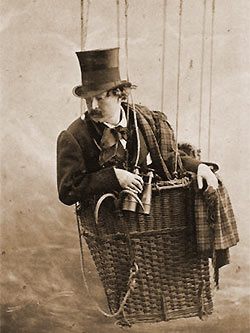 |
In May 1816 Niepce managed to fix the images formed on paper coated with silver chloride. August 19, 1839, the deputy François Arago unveiled before the Academies of Sciences and Fine Arts discovered Jacques Daguerre, the daguerreotype (photography shot on copper plate covered with a layer of silver sensitized by iodine fumes ). The image revolution is launched. The first use of sensitized paper to produce a negative is invented by Talbot in 1840 and took the name of calotype or talbotype. Starting in 1854, Nadar, whose real name was Gaspard-Felix Tournachon, cartoonist, French balloonist and photographer, became one of the hottest photographers in the capital. The portraits of personalities he realizes in his studio in the "Saint-Lazare" street show great attention to lighting. But Nadar wants the photographic camera can now be carried outdoors and travel. Thus, it will experience the photograph embedded in a balloon. In 1858 he performed the first aerial photograph of Paris from a "captive flight" at 80 meters above the Petit Bicetre (now Petit-Clamart). He is considered as the pioneer of aerial photography by balloon. Jules Verne inspired by this character and his attempts at aerial photography, in 1862 wrote the novel "Five Weeks in a Balloon. Nadar spent the next two years to promote his own aircraft, "lighter than air", but his greatest success of aerial photography, he won by his views of the Arc de Triomphe in 1868 taken with a Single Lens Multiple. |
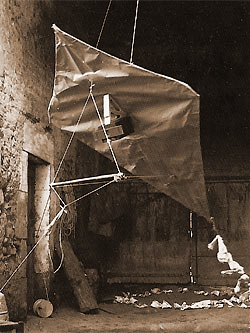 |
It's 20 years later, in 1888, a French, Arthur Batut, makes its 1st aerial photography with a kite in his farm of En Laure at Labruguière (Tarn). He wrote in the journal Nature, August 88: "I am continuing for six months to solve the problem of aerial photography by kites. The results I obtained, although still very imperfect, allow me to hope a complete success. " In this article are attached two prints 8 X 10 obtained at heights of 80 and 100 meters. Though blurred, these first trials are more interesting and M. Gaston Tissandier, director of Nature, wrote to A. Batut to encourage him to persevere. The kite of Batut (pictured left) is a diamond plate of 2.50 m by 1.75 m. The frame is in wood. A cord connects the tops of the amounts of the frame and the skeleton is wrapped with reinforced paper at the corners with a durable canvas. It is equipped with a tail. The photographic camera used is made of lightweight wood with a glass of photosensitive 9X12 cm. La chambre est fixée à l'armature en bois du cerf-volant. The room is attached to the wooden frame of the kite. The release was controlled by burning a wick tinder lit at the start and whose length is previously calculated. A banner was unrolled to note that the photo is taken. Thereafter he will his kite removable and easily transportable. The paper will be replaced by the pongee (lightweight taffeta). |
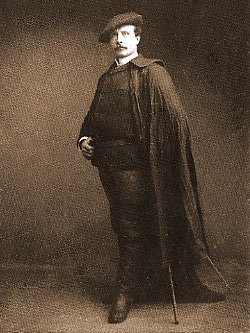 |
Arthur Batut |
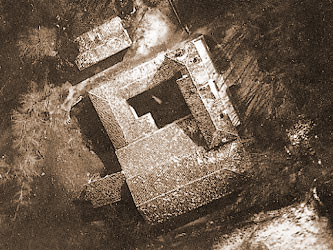 |
In 1889, Arthur Batut publishes in Nature a magnificent event obtained at 127 m in height, representing the farm Enlaure. (Labruguière - Tarn). Aerial photography by kite was born. |
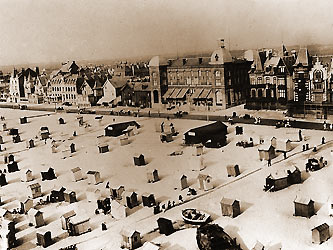 |
farm of 'En Laure. Labruguière |
View of the beach and town of Berck
(taken March 11, 1911 at about 250 m altitude) |
In 1892, the kite will definitely metamorphosis of forms with totally new and functional. Indeed, Sir Lawrence Hargrave was the first man to achieve cellular kites.This device has a major ascending power. |
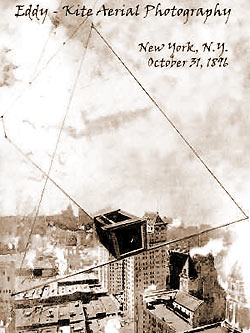 |
In May 1895, an American journalist, William A. Eddy, of Bayonne (New Jersey) took the first aerial photograph by kite of the New Continent and obtained the views format 8.89 x 8.89 cm, raising his camera using kites dihedral-shaped diamond, driving without tail and inspired kites Malaysia. |
|
Triggering devices combustion are gradually replaced by mechanical and electricalsystems. During the month of August 1896, he got 7 good shots with an early model of a Kodak camera, used at a height ranging from 300 to 450 meters. On September 21, 1895, another American, Gilbert Totten Woglom performed the first series of photos of the city of New York with a camera large format, using negatives on glass plates of 16.51 x 21.59cm to get a better rendering of details. In 1897, a Russian engineer, R. Thiélé , invented a method and special equipment for surveying by aerial photography. He is interesting work in Turkestan and the Pripyat valley. In 1902, he made exceptional panoramic photographs. A train of six kites cell type Lecornu 2.5 m2 raising a group of seven rooms photographic format 12 x 12 cm. |
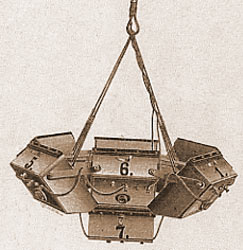 |
|
le panoramographe |
||
The device, called panoramographe consists of six dark rooms arranged in the six sides of a regular hexagon and inclined at an angle to horizon. The seventh room occupies the center of the hexagon and the axis of its objective is vertical. All rooms are equipped with Zeiss Anastigmat objectives, large angular. |
In Belgium, the month of October 1905 a photographer of Ghent, Armand Goderus, published in the Bulletin of the Belgian Association of Photography, a long article, well illustrated, entitled The Kite photographer. He will inspire another Belgian, Rene Desclée that 1910 brings two beautiful photographs, taken at 150 meters, one showing the Saint-Piat and other Palace of Justice. Not only the sharpness is perfect, but the contrast due to the oblique illumination of the subject shows an accuracy unexpected architectural details. His first camera for the aerial is built by himself. It is a small dark room made of wood very light receiving negatives on glass plates of 8 x 8 cm. As for his first kite is a multicellular type Lecornu (square shaped shelf). From the months of August and September 1911 in the small seaside town of Newport, he made successful shots at an altitude of 300 meters and images 8 x 8 cm to reveal a sharpness. ( right picture) Rene Desclée conduct a series of 124 photographs of aerial photography kite. Learn more about the life of René Desclée |
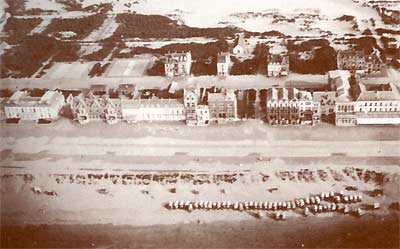 Newport: dunes and beach, 23-8-1911 |
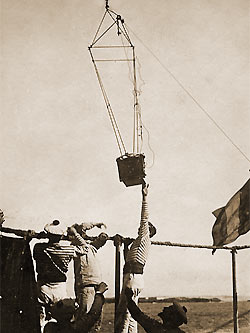 |
At the same time, the Ministries of War of various European nations offer considerable budgets for the development of kites. In France, in 1902, Captain Saconney experimenting with a system of kites that can take a first step in a camera that can record the coasts. In the USA, in 1905, G. Lawrence , experimented with aerial photography from a ship, the USS Maine. The kites used were of regular hexagonal type made of light pine frame covered with muslin and known as the "Conyne", the name of the inventor. |
On 1 April 1907, A. Batut performed the first aerial stereo photograph. He gets a double print with the sharpness, due to insufficient staff objectives, leaves something to be desired, but the terrain is very sensitive stereo. In 1910, France, Paris, Gomes firm specializing in automotive, develops an active kite and markets for the first time a system of aerial photography kite. Auguste C. wrote in his journal: "Aerial photography is the order of the day, the beautiful pictures that several ballonnists and some airmen were presented to the public, have already attracted the interest of the public on the panoramic aerial views ... .. There is already some time that people like MM. Batut, Wenz etc., have obtained pictures of beauty. As to its usefulness, it is more than obvious. The owner of a field or a soil will plan view of the field, the geographer can easily take a sketch of the photographic field he studied, and for the many fans of the darkroom, they can engage a new form of photography, which provided splendid shots. |
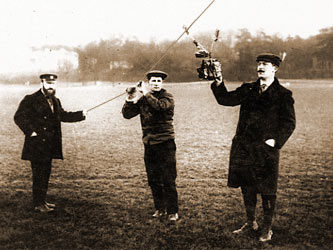 Aug.Gomes is testing its aero-photographic equipment . |
Many other applications are dedicated to photography by kites. The objective is, by that act like a human eye, which rises high into space to observe and see what that man is powerless to look at ground level. Thanks to him, the explorer of an unknown country can in half an hour to recognize his way to several kilometers. Interview with A. Gomes |
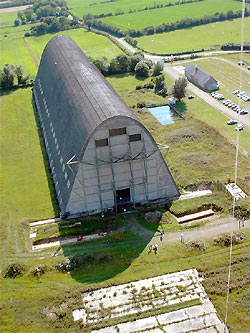 |
1979 , George RIVALS, co-founder of CVCF (Cerf-Volant Club de France) gives an impetus to the Aerial photography. | |
1982, Jacques Durieu, based on NCB (New kiter Belgium) and is likewise promoting Aerial photography |
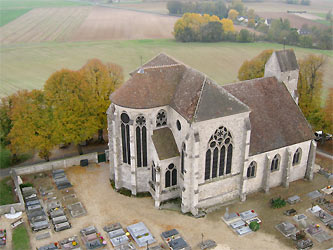 |
|
Church of the Butte de Doue (77) Patrick Mouchague |
||
Hangar to Airships - Ecausseville Christian Bécot |
Today, equipment is changing (digital camera, return video to the ground, orientation and trigger the camera by remote control radio, ..) and technical of kites refined |
|
Come discover the aerial photography in our links page Tell Cris Benton to go fly a kite. He’ll return with breathtaking photographs taken from seemingly impossible vantage points. As a young architect, Cris wanted sharp images of his buildings’ upper reaches, so he pioneered the art/science of aerial kite photography. Now a professor of architecture at UC Berkeley, Cris is still a leader in the aerial kite photography community, constantly developing new ways to rig remotely controlled cameras to customized kites for stunning results. Also, see the centuries-old technique of using kites to lift people in the air! Watch the clip, and check out Cris’ website arch.ced.berkeley.edu Kite Aerial Photography on MAKE: television from make magazine on Vimeo. |
|
| K A P by Nicolas Cortyl ... | and by José Valois |
| NEW YORK - 24 september 2010- Stuart Fox de TechNewsDaily : Kite Aerial Photography (KAP) Helps NGO Engineers develop infrastructure - see USAID : United States Agency for International Development |
Nos photographies aériennes par cerf-volant sur notre page (en cliquant sur la photo ci-dessous) |
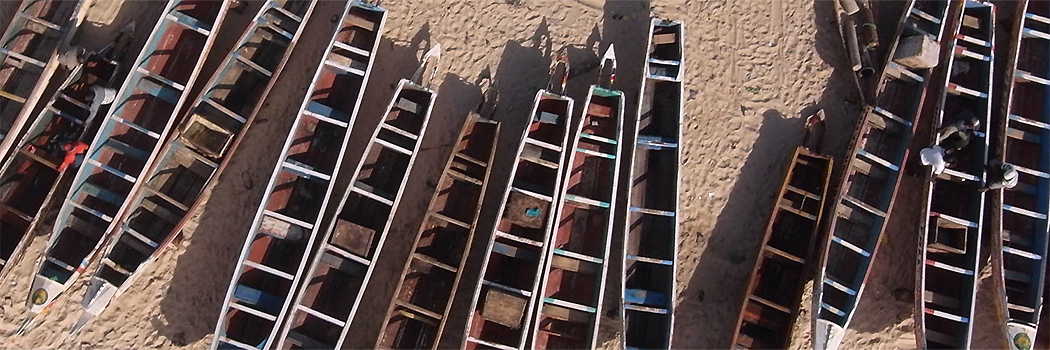 |
| More about our participation in international kite aerial photography conferences: KAPINED/10. |